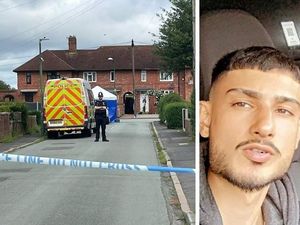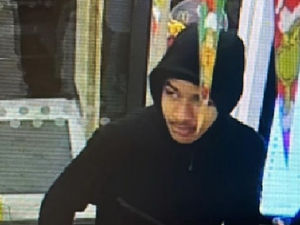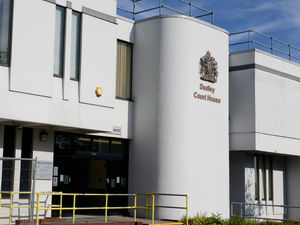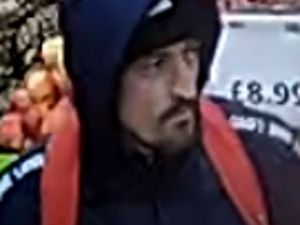Chilling memories of serial killer the Black Panther
Right from the start, things went wrong.
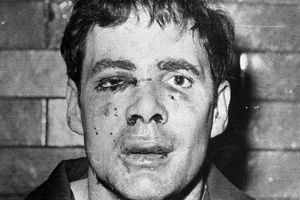
With kidnap virtually unheard of in Britain 40 years ago, police initially thought the disappearance of teenager Lesley Whittle might be a student prank.
And instead of a media blackout which has since become standard procedure - one of the biggest lessons learned from those tragic events of January 1975 - the story was quickly all over the airwaves.
Lesley, a petite 17-year-old who was barely 5ft tall, was taken from her home in Highley during the night of January 14. Far from it being a prank, it was a carefully-planned operation by a ruthless stop-at-nothing crook and serial killer, who became dubbed the Black Panther by the media.
His name was Donald Neilson and he had entered the family home and abducted Lesley from her own bedroom, allowing her to put on only a dressing gown. He left a ransom demand for £50,000 punched out on plastic Dymo tape.
Neilson, who had changed his name from Donald Nappey, came from Bradford and had already killed three people in cold blood in the course of robberies at sub post offices. His motive in kidnapping Lesley, whose family had the well-known Whittle coach firm, was simple – money.
Her abduction was one of the most sensational stories of the time and was not to have a happy ending.
Arrangements were made to pay a ransom but various circumstances conspired against a successful handover. At one stage Lesley was forced to make a tape recording, in which she sounded calm.
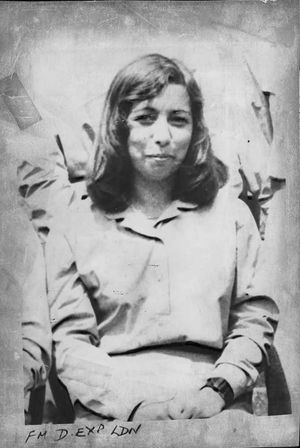
Interrupted while laying a ransom trail, Neilson shot a security guard six times near a Freightliner railway terminal in Dudley. Found in a car nearby was evidence which directly linked the driver with the sub post office murders and Lesley's kidnap. The security guard died over a year later.
It was not until March 1975 that police began a thorough search of Bathpool Park, Kidsgrove, the scene of a failed ransom drop. Lesley was found dead, with a noose around her neck, in a deep drainage shaft.
During the twists and turns of the case, the Shropshire Star's man on the spot - literally, as a newspaper hut was permanently stationed on a car park in the village - was reporter Andy Wright, then living in Bridgnorth.
"I ended up doing nothing else for about two years. I was pretty well on it full time until the conclusion of the court case at Oxford Crown Court.
"Kidnapping was almost unknown in England. I think at first the police thought it was some kind of prank being played by Lesley or her college friends (Lesley was a student at Wulfrun College in Wolverhampton), but they pretty soon did realise it was serious and turned all kinds of resources onto it."
In Highley, the reaction was one of shock.
"It had been until quite recently a mining community and was quite tight-knit. There was a deal of suspicion surrounding everyone really."
The investigation was led by Chief Superintendent Bob Booth, who hitherto had an excellent record in solving murders, but whose career was to be broken by the failures of the Lesley Whittle case.
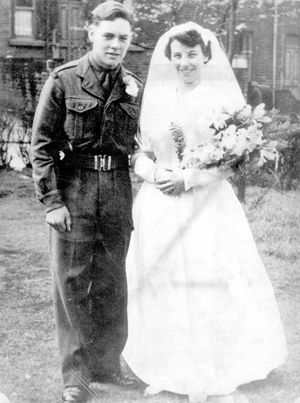
"I think you have to feel fairly sorry for Mr Booth. He and his colleagues had never handled anything like that before. The major error that they made was that they didn't take the Press into their confidence.
"As you know, it all went wrong. On more than one occasion there were a number of Press vehicles chasing people in the hope that they would get a lucky break about the story."
After the discovery of Lesley's body, her killer was to remain at large for many months. It was not until December 11, 1975, that Neilson was caught - essentially by chance - by two police constables near Mansfield.
They saw him acting suspiciously near a sub post office. Neilson pulled a gun and forced the pair to drive with him. However, after a considerable struggle, they managed to overpower him, with the help of people from a fish and chip shop queue who rushed to help.
For Andy this was the most momentous moment of the whole affair as it was to land him and the Shropshire Star with an international scoop.
"I got a phone call from our news editor, Warren Wilson, saying we had had a tip-off that somebody who was linked with the Lesley Whittle kidnap and the post office murders had been apprehended at a place called, I think, Mansfield Woodhouse, and he asked us to go there.
"I remember saying to him: 'Have you any idea how far that is and what the conditions are like?' - it was snowing heavily.
"Me and photographer Dave Bagnall drove through the snow and eventually got to Mansfield where some comedian had turned all the direction signs round so we couldn't find our way. We were driving the wrong way down a one way street when a police car came behind us with its blue light flashing. It turned out that these were the two coppers who earlier that evening had apprehended Donald Neilson. Purely by chance we got an exclusive interview with them. They also very kindly found us accommodation for the night.
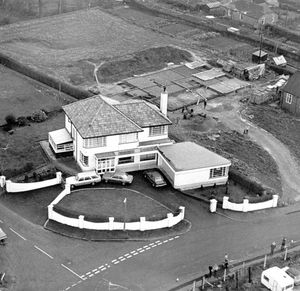
"They were Tony White and Stuart Mackenzie and they were really nice blokes.
"Although it was not confirmed, they were pretty sure they had just caught the Black Panther. One was driving, and the other had grappled with the Black Panther in the car. The gun went off and blew a hole in the roof. They bailed out into the road and some guys in a queue outside a fish and chip shop ran to their assistance including, I seem to recall, a bloke who was a karate expert.
"If you remember seeing the pictures of Neilson after his capture, he was battered.
"I filed my story first thing in the morning when the copytakers came in and Dave got pictures of the two coppers. We had got ourselves an exclusive."
Andy covered the trial at Oxford Crown Court.
"There was a scary moment which is still imprinted on my mind.
"The first two rows were full of evidence bags. At one point, I think it was his defence who handed him the sawn off shotgun and asked him to show how he stood with this gun during the post office raids. He went all the way round the court in an arc with the gun levelled. He trained it round to everybody in court. As one, they went to the floor. Almost as a reflex action, you went down as it came towards you. The ammunition was in a bag not far away.
"He was quite a menacing man. He was not big, but had a menacing stare."
Neilson received five life sentences.
In 2008 a judge ruled that he should never be released. Neilson developed motor neurone disease and died as a prisoner in 2011, aged 75.
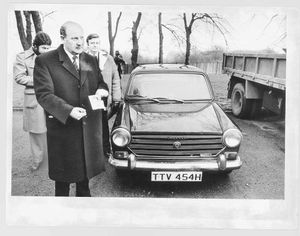
Another journalist who covered the kidnapping was Tony Bishop, the district chief reporter for our sister paper, the Express & Star.
"I had a call out of the blue summoning me to a press conference at Kidderminster police station at 10 o'clock at night, which was a bit strange. I beetled over there and there was a whole crowd of pressmen there already," recalls Tony.
"News of the kidnap had been put out on local radio in Birmingham. The information had been filed by a Kidderminster freelance journalist, Bill Williams. His office in Kidderminster was next to the Whittle company offices and obviously he had got some good contacts there. He disclosed the news of the kidnap before anything had been put out by the police.
"Bill, being a good journalist, asked the police for confirmation but all he got was the usual reply - No Comment. Bill decided to market the story, and did it to local radio, which rather thwarted any plans the police might have had for a complete news blackout."
As the investigation continued, police inexperience in dealing with the media in such situations continued to have unfortunate consequences.
"A press conference was called in which Detective Chief Superintendent Bob Booth said he was still hoping that the kidnapper might get in touch. There was a 1am deadline at a rendezvous which he was not going to reveal. Unfortunately Bill Williams got the location of the rendezvous which was a telephone kiosk at the Swan Centre in Kidderminster and pushed out the location to the evening press, which was used, much to the annoyance of Bob Booth.
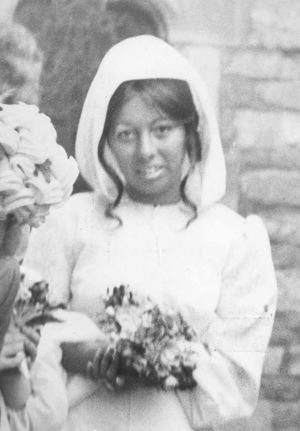
"Bill died a year or two ago and one of my friends told me he was still a bit troubled about his involvement in the Lesley Whittle kidnap, but if the police had been a bit more co-operative and said, 'Look Bill, hold on for 24 hours', he would have complied, but instead they said No Comment."
Tony said three police forces were involved in the investigation and did not seem to be co-operating particularly, and a Commander from Scotland Yard was brought in to co-ordinate the inquiry.
As for the police handling of the affair, Tony said: "They got off to an unfortunate start. I felt a bit sorry for Bob Booth at the end of the day. He had solved 70 murders and was a very accomplished detective. At the end of the day he was relegated to being a uniformed Chief Superintendent at Malvern."
Much of the material relating to Neilson's crimes was destroyed on the orders of West Mercia Chief Constable Alex Rennie to ensure guarantees of confidentiality were kept.
Writing in his autobiography Farmhand to Chief Constable, the late Mr Rennie explained: "The usual practice in murder cases is to retain the papers and exhibits for unlimited periods of time.
"In this instance case papers and other materials were spread about in other forces. In West Mercia we had a cell half full, kept doubly locked, containing thousands of statements and other documents gathered in the course of inquiries.
"Over the years I had been pressed by journalists, authors and others, including police officers, to give them access to the material, no doubt to write and, hopefully, make money.
"Some of the information was of a sensitive and highly-confidential nature which was given by people on the promise that it would remain so. I was concerned that on my retirement the information might in course of time reach the public domain."
He added: "I had been responsible for the assurance of secrecy given so I decided the honourable course was to destroy the material."

